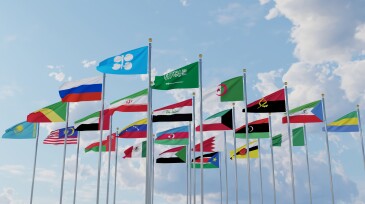OPEC
-
International majors showing new interest in Iraq as China scoops blocks in Baghdad’s most recent bid rounds.
-
Angola leaves OPEC after 16 years to leverage its oil resources for economic growth.
-
The International Energy Agency recently said the oil and gas industry is spending far too little on clean energy technologies.
-
In making a historically small production quota hike, OPEC+ members outline some big concerns about the group's ability to keep up with demand.
-
If OPEC's expectations for demand hold true, the 13-member exporting group will need to add more than 3 million B/D to the market by the end of next year.
-
The alliance ratified another modest daily production increase of 400,000 barrels.
-
Oil production in the US is resurging and poised to refute some skeptics who believed domestic output peaked just prior to the COVID-19 pandemic.
-
Next month, the 23-nation group of crude exporters will raise its allowable production output by another 400,000 B/D.
-
Forecasts for oil demand are looking up. Will the optimistic views prove to be on target? We have learned how the market can shift or wildly careen, both historically and in the very recent past. The outlooks, which reflect a consensus of sorts, is encouraging for producers.
-
Saudi Arabia will keep its voluntary 1 million-barrel cut intact while Russia allowed a small production increase.
Page 1 of 3








